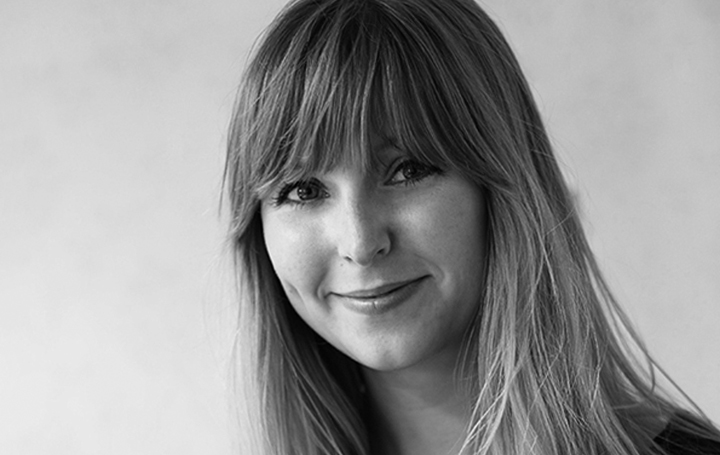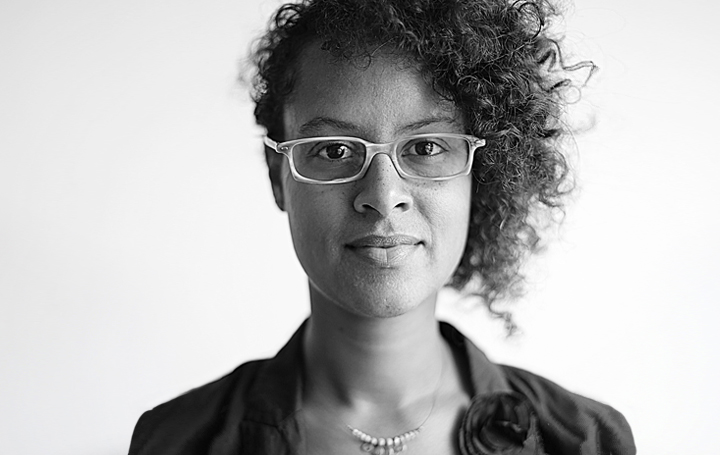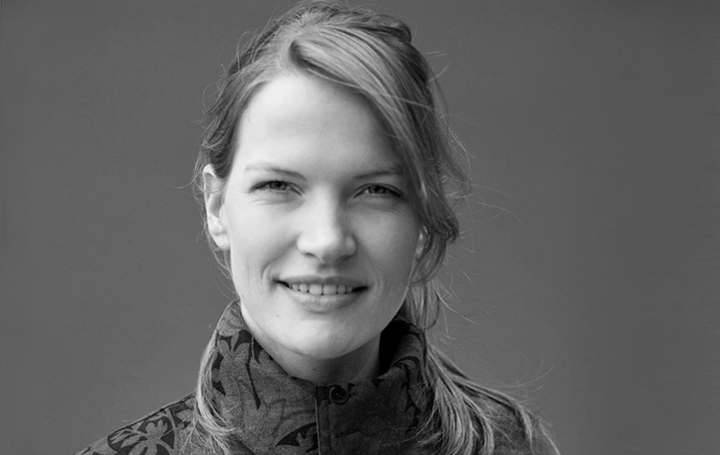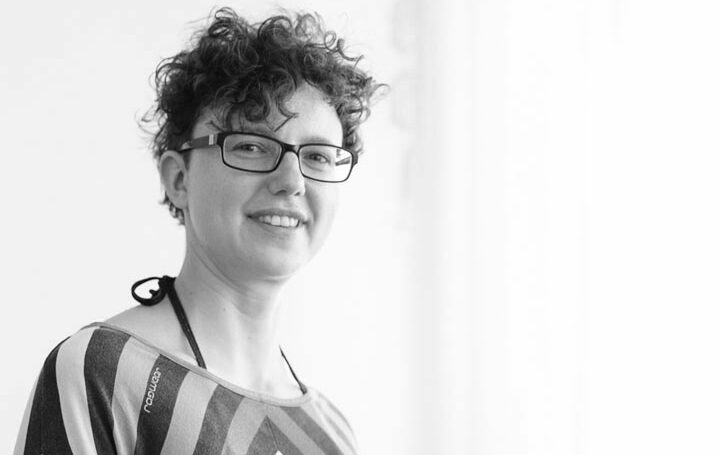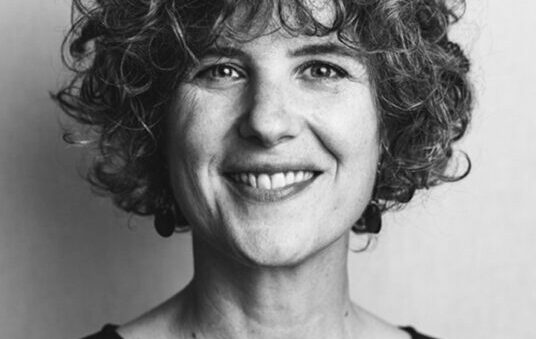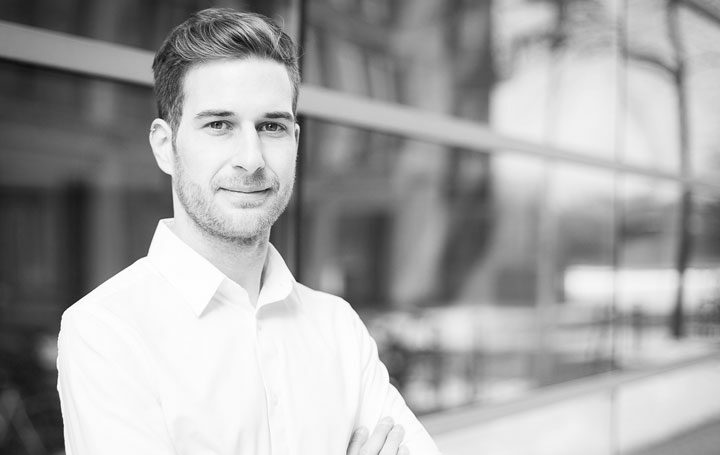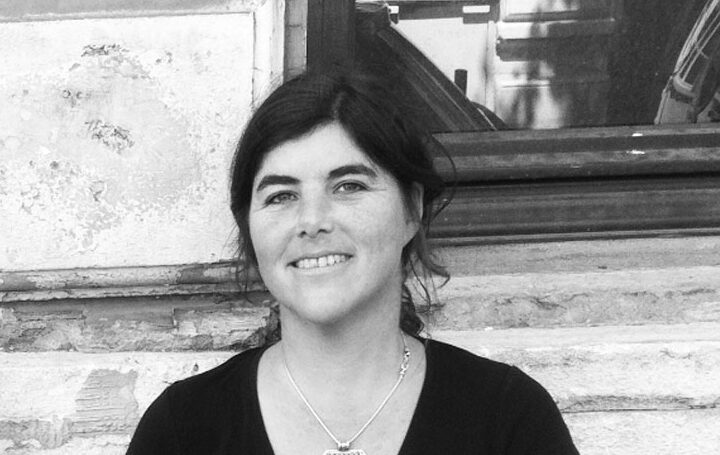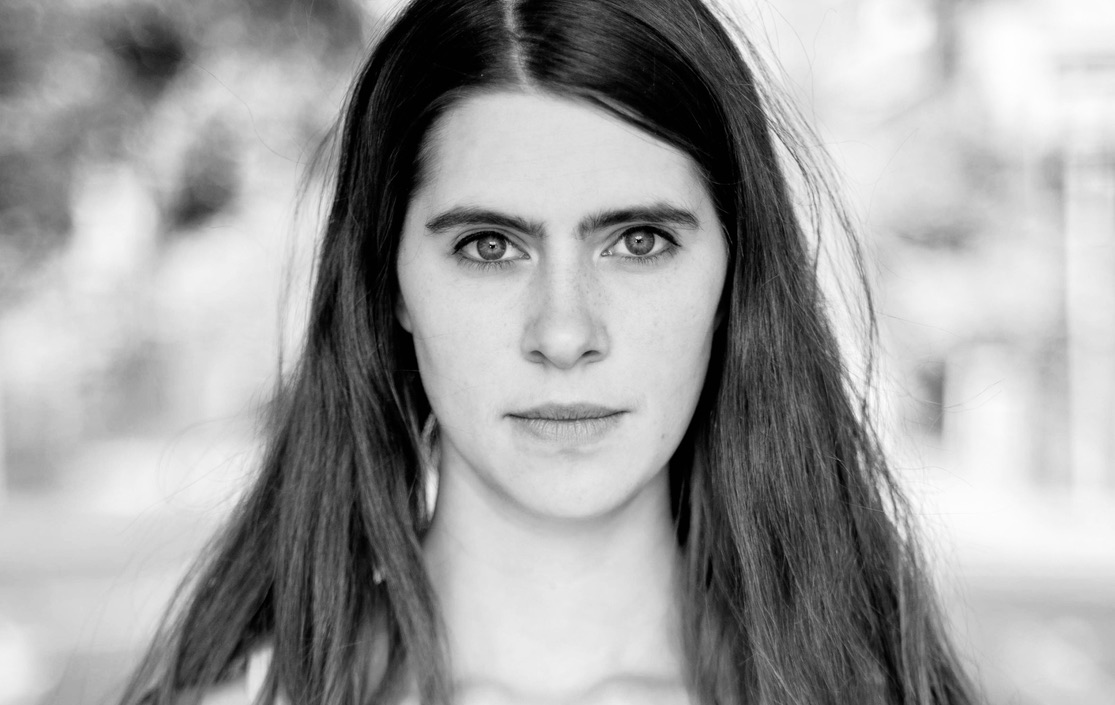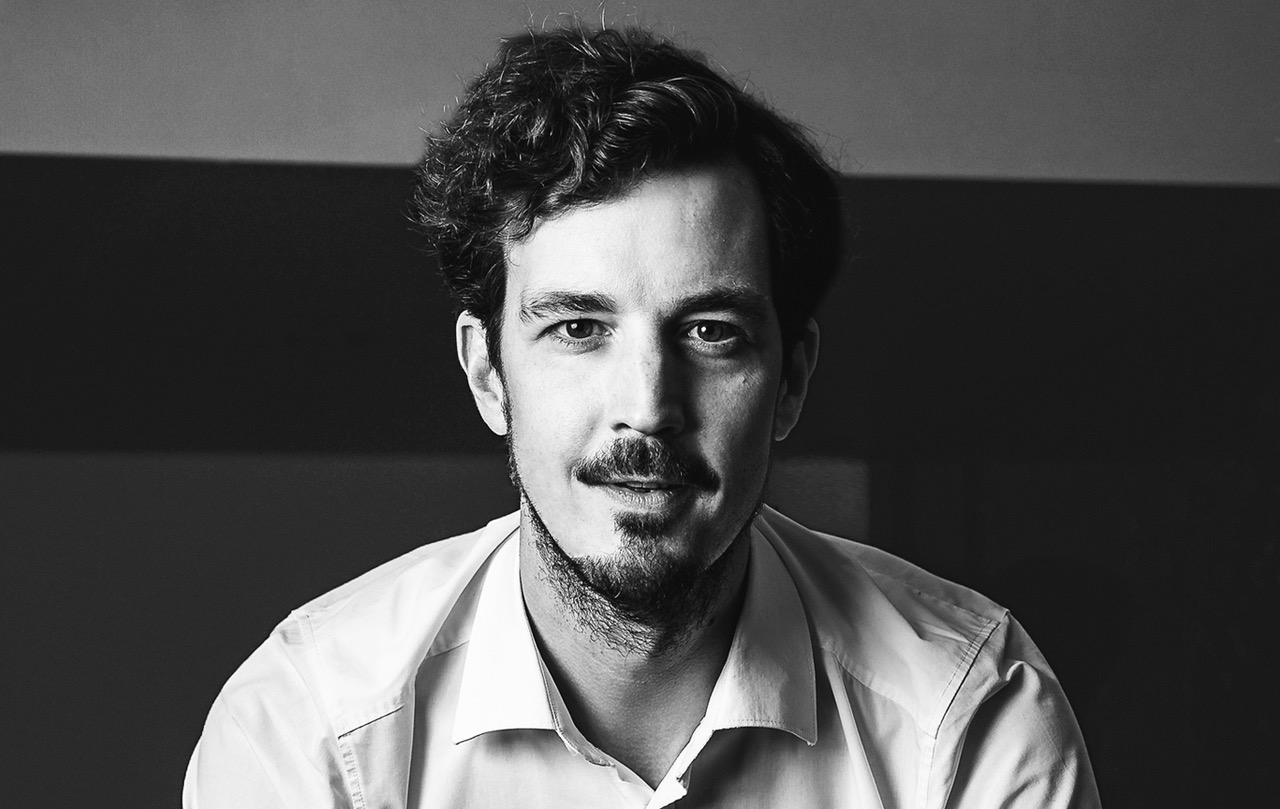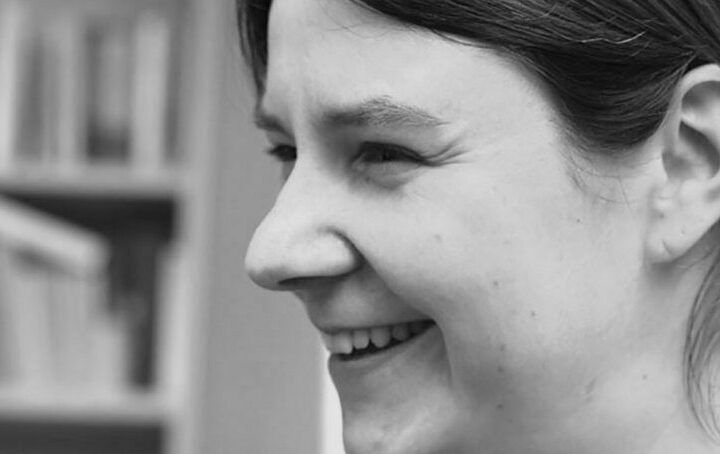MehrWert NRW
27. Dezember 2016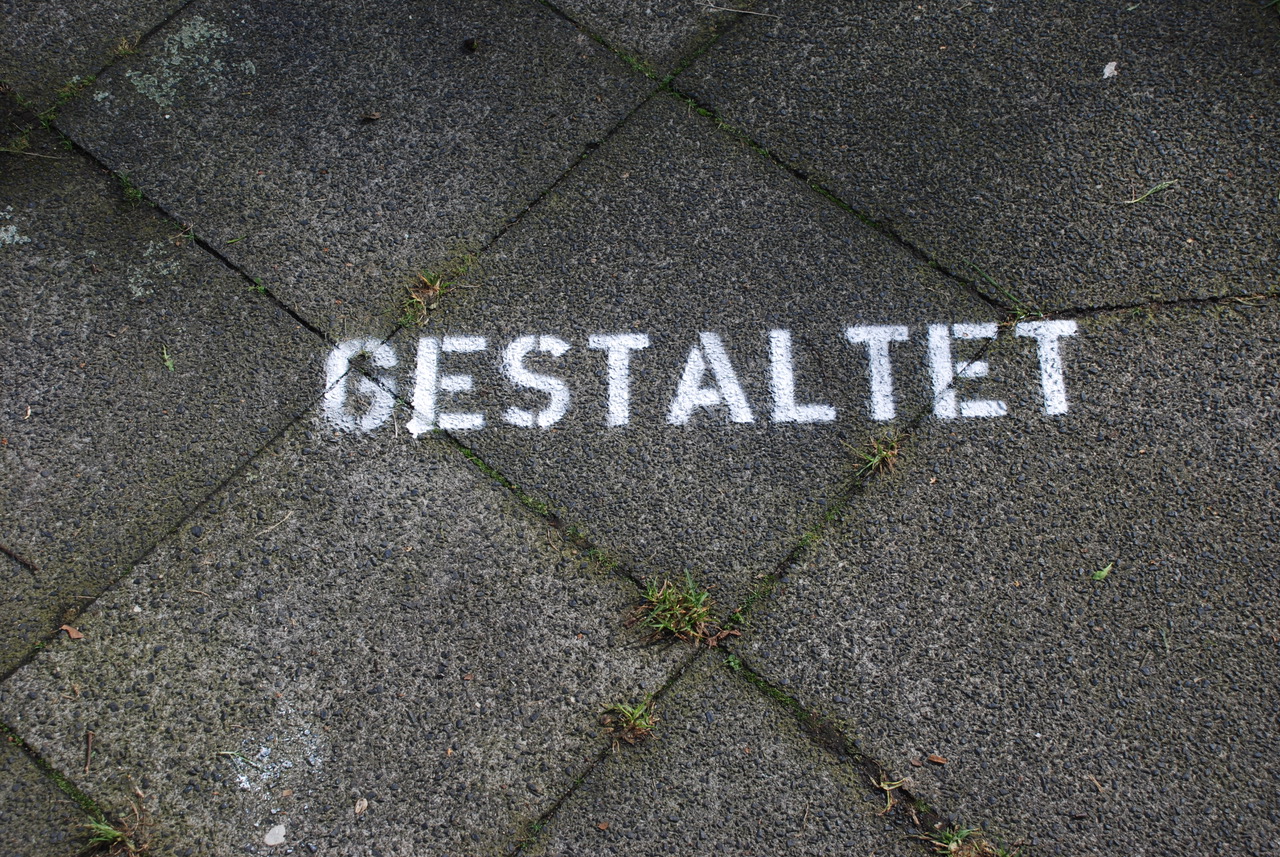
Social Urban Design
29. Dezember 2016Facts
Name: KnowMe
Bereich: Nachhaltige Mode
Designerin: Noomi Lösing
Gegründet: 2009
Ort: Münster, Deutschland
Website: www.knowme-label.com/
Facebook: www.facebook.com/pages/KnowMe
Wir treffen Noomi in ihrem kuscheligen Atelier in einem Münsteraner Hinterhof. Es gibt einen kleinen Verkaufs- & Showroom und eine Werkstatt, in der langjährige Mitarbeiterin Hauke gerade an einem Kleid näht und Praktikantin Noriko an Täschchen aus Restlederstoffen einer Münsteraner Polsterei. Noomi versorgt uns mit leckerem Gebäck und Tee und wir machen es uns in der kleinen Sitzecke gemütlich. Noomi hat KnowMe 2006 gegründet. Als gelernte Damenschneiderin und Schnittdirektrice war ihr nach ein paar wenigen Jahren bei konventionellen Modelabels schnell klar, dass sie mit ihrem eigenen Label nur „korrekte Klamotten“ herstellen würde.
ökoRAUSCH: Wie kamst du zur nachhaltigen Mode und wie waren deine Anfänge?
Noomi: Ich bin da durch Zufall reingeschlittert. Ich war nach meinem Abitur bei einer Beratungsstelle und die Frau dort ging ziemlich viele Fragen mit mir durch. Zum Schluss hat sie mich angeguckt und gefragt: „Was wäre denn mit einer Schneiderausbildung?“ Bis zu diesem Zeitpunkt hatte ich daran noch nie gedacht. Aber etwas Kreatives, Handwerkliches wollte ich auf jeden Fall machen und so habe ich mich beworben.
Mir war es schon immer wichtig, gute Materialien zu verwenden. Ich hatte in der Ausbildung gemerkt: wenn man einen billigen Stoff kauft, sich ein tolles Teil daraus näht und es dann nach dem ersten Waschen nicht mehr so aussieht wie vorher, ist das echt ärgerlich! Auch diese Plastikstoffe auf der Haut fand ich nicht so angenehm. So habe ich mich damals schon auf die Suche nach guten Materialien gemacht. Und gut hieß damals OEKO-TEX STANDARD 100. Mittlerweile weiß ich natürlich, dass das kein wirkliches Zertifikat ist. Aber damals war es das, was ich gefunden habe.
In der Modeindustrie passiert viel im Ausland. Leute bekommen wenig Geld, haben harte Arbeitsbedingungen und produzieren Sachen, die hier auch noch mega billig angeboten werden. Ich habe mich schon immer gefragt, wie das sein kann? Weil ich gesehen habe, wie viel Arbeit eigentlich hinter so einem Kleidungsstück steckt, bis du es anziehen kannst. Daher wollte ich immer eine made in Germany Sache daraus machen. So habe ich auch die Kontrolle darüber, die Teile in einer guten Qualität auszuliefern. Es gibt keine Schnittkomplikationen oder Fehler, die schnell mal auftreten, wenn man im Ausland produzieren lässt.
Anfangs habe ich meine Stoffe noch in Rohweiß bekommen und mir dann eine Färberei gesucht, die sie mir nach meinen Wünschen und Nachhaltigkeitszertifikaten einfärbt. Das war damals noch super aufwändig und kostspielig, weil ich immer gleich mindestens 50 Kilo – das sind 50 Meter – abnehmen musste. Und dann hatte ich nur eine Farbe! Auf meinen ersten Messen habe ich dann die Jungs von Lebenskleidung aus Berlin kennengelernt. Die hatten damals schon Biostoffe und das war für mich großartig. So konnte ich von vornherein eine kleine Auswahl an zertifizierten Biostoffen verarbeiten und musste mir keine Rohware mehr kaufen und färben lassen.
ÖKO-MATERIALIEN & RECYCLING
Alle hergestellten Teile werden entweder aus GOTS-zertifizierten [Global Organic Textile Standart ] Bio- oder Recyclingstoffen gefertigt. Die Wolle stammt aus biologischer Tierhaltung im Allgäu.
LANGE TRAGBAR, HOHE KOMBINIERBARKEIT
Klassiker vor Trends. Viele Teile sprechen mehrere Generationen an: Der Rock Hanko ist bei jungen und reifen Frauen gleichermaßen beliebt. Hohe Stoffqualität trägt dazu bei, dass man sie lange trägt. Die Sachen bieten eine hohe Kombinierbarkeit: Die Collegejacke ist wendbar und unisex. Auch alle Babysachen sind wendbar und haben extralange, krempelbare Bündchen, so dass sie von zwei bis vier Jahren tragbar sind.
FAIRE ARBEITSBEDINGUNGEN
Noomi und ihre Mitarbeiterin Hauke nähen alle Teile selbst. Wenn es einmal eng wird, holen sie sich Unterstützung von zwei selbstständigen Schneiderinnen oder den Werkstätten des Stift Tilbeck.
INDIVIDUALITÄT
Alle KnowMe Teile können je nach Bedarf individualisiert werden. Da ohnehin weitestgehend auf Bestellung und nicht auf Vorrat produziert wird, können längere oder kürzere Ärmel oder Hosenbeine oder ein bestimmter Stoffwunsch berücksichtig werden. Auch Änderungen an Teilen von der Stange gehören zum Standardangebot.
UPCYCLING
Verschnitte aus der Produktion finden sich als Füllmaterial in Sitzkissen wieder. Größere Stücke werden zu Jogginghosen oder Leggins. Beim Upcycling ausrangierter Klamotten werden diese so verändert, dass sie wieder zeitgemäß sind und zu veränderten Umständen oder Vorlieben passen. In Do it yourself Workshops kann man von Noomi lernen, wie das geht.
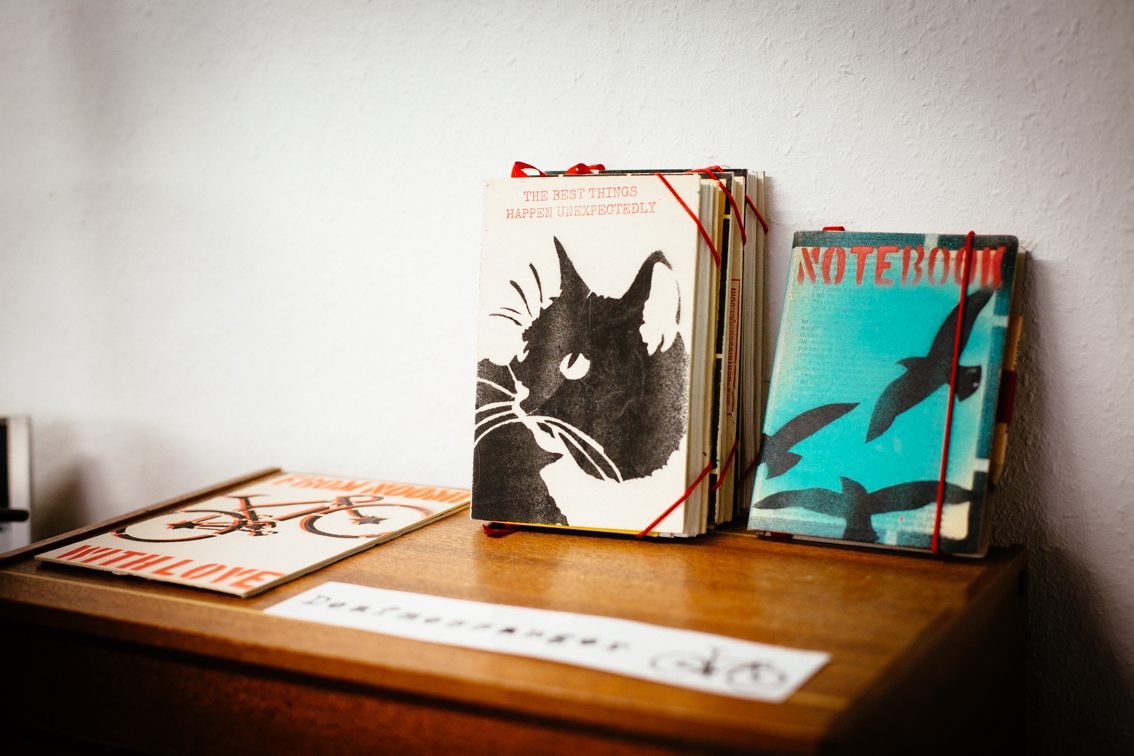
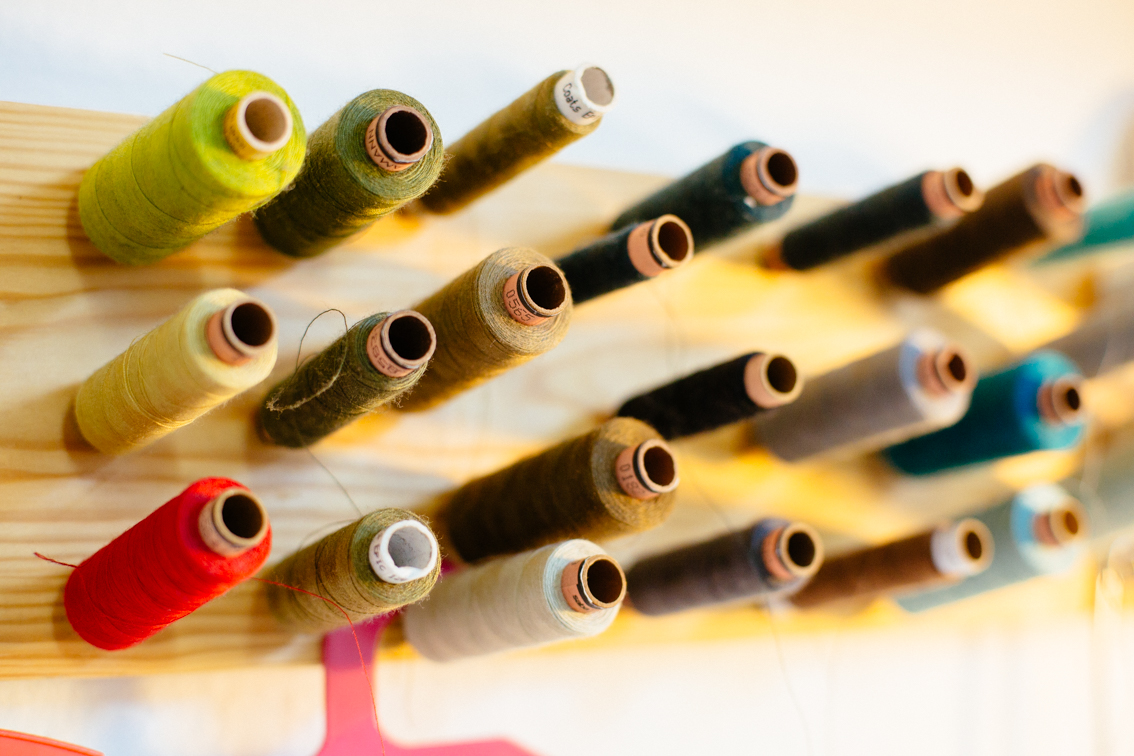
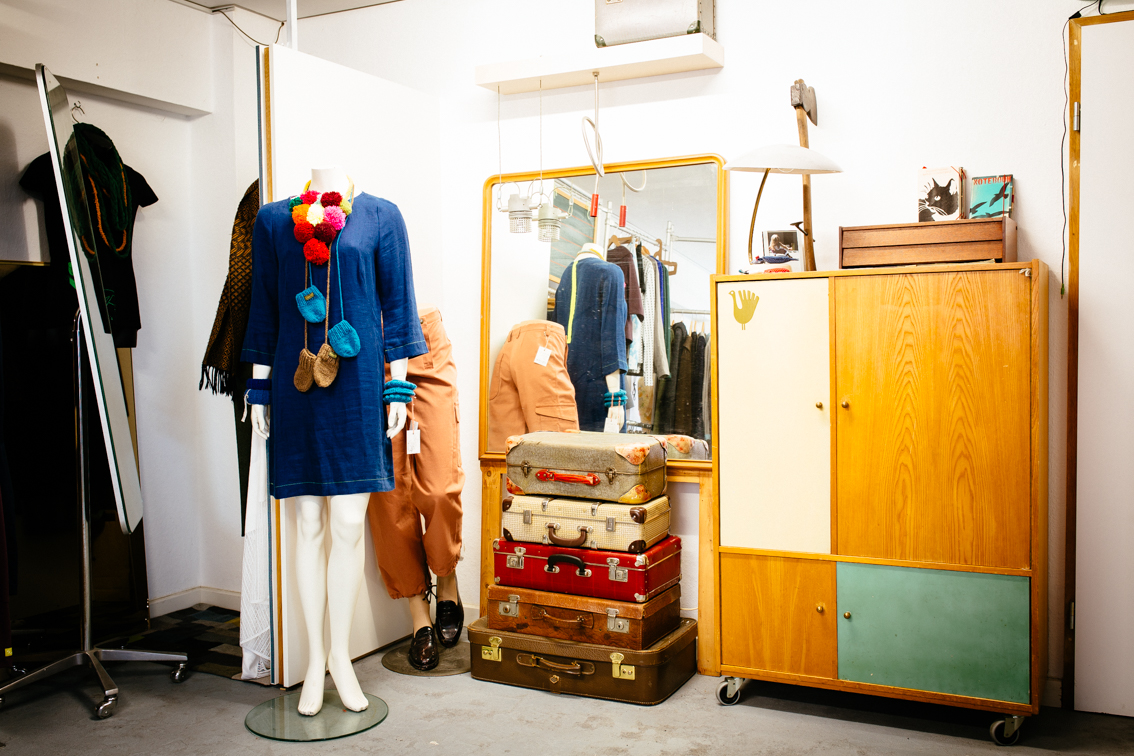
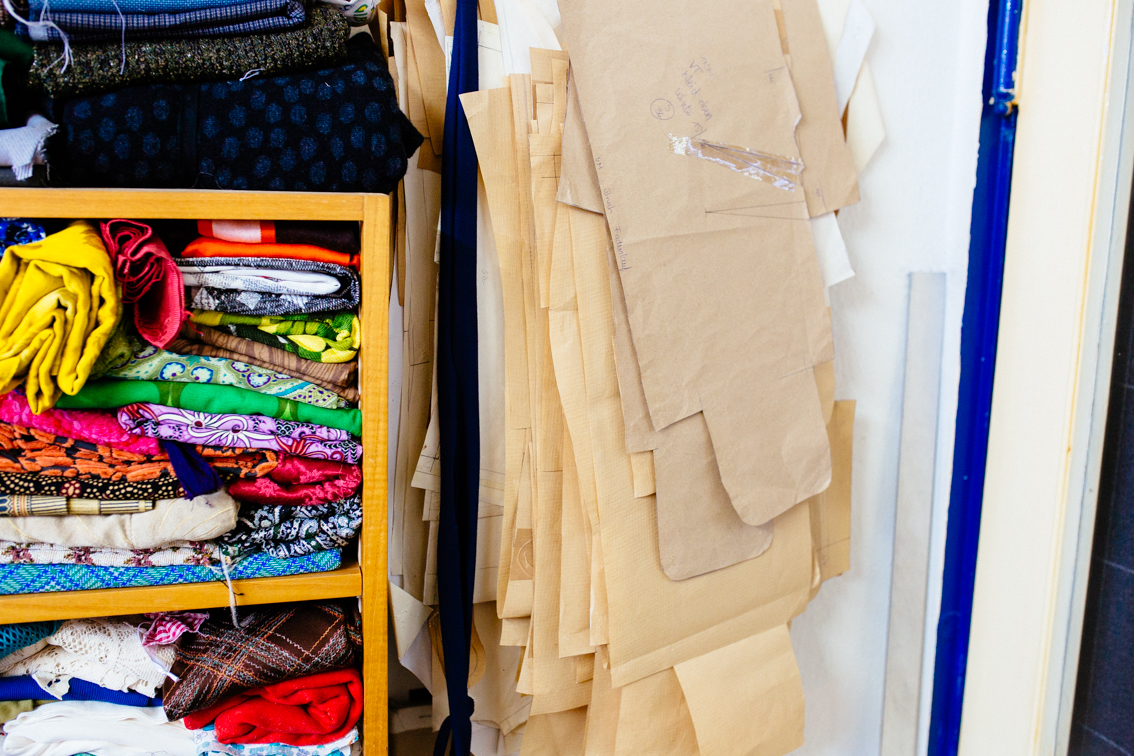
Kam dein Nachhaltigkeitsinteresse denn auch aus deinem privaten Lebensumfeld oder erst durch die Ausbildung?
Nein, das kam tatsächlich erst durch das Sich-damit-beschäftigen in der Ausbildung. Ich wollte von Anfang an gute Qualität liefern. Wenn du dir bei mir ein Teil maßschneidern lässt, machst du das nicht jedes Jahr. Das Teil trägst du zehn Jahre! Das sind dann Klassiker. Und das mit einem tollen Stoff zu liefern, bei dem du genau weißt wo er herkommt. Wow. Das war eigentlich mein Anspruch von Anfang an. Mittlerweile habe ich es halt leichter.
Was war denn am Anfang für dich am schwierigsten?
Mich zu vermarkten. Bei meinen ersten Auftritten auf der INNATEX [Internationale Fachmesse für nachhaltige Textilien ] war ich noch sehr unsicher wegen der Mode, die dort vorherrschte. Die Schnitte waren sehr weit und es gab nichts, was mich irgendwie angesprochen hätte. Ich habe mich schon gefragt, wie ich mich da vermarkten kann. Aber im Grunde habe ich schnell gemerkt, dass das genau die richtige Messe für mich war. Die Leute, die die INNATEX besuchten, hatten schon lange Bekleidungsgeschäfte, in denen Naturmaterialien angeboten wurden. So habe ich dort tolle Kontakte zu meinen Händlern aufgebaut.
Bei wem musstest du mehr Überzeugungsarbeit für ökofaire Kleidung leisten? Bei deinen Kunden oder eher auf der Händlerseite?
Eher auf der Händlerseite. Ich habe schon das Gefühl, dass die Händler in erster Linie günstig einkaufen wollen. Aber bei Kleidung made in Germany mit GOTS-zertifizierten Materialien braucht man über bestimmte Preise einfach nicht reden. Daher habe ich mich auch vor zwei Jahren vom Messegeschäft verabschiedet.
Bei vielen Einzelhändlern habe ich auch das Gefühl, dass sie erster Linie einfach ihre Sachen verkaufen möchten und nicht auch noch die Story dahinter. Aber dadurch, dass wir so individuell arbeiten gibt es einfach eine Geschichte. Selbst Läden in Münster ist das oft zu kompliziert. Dabei ist eben eine Hose zu kürzen oder die Ärmel am Kleid enger zu machen eine Kleinigkeit. Da komme ich eben vorbei, stecke das am Kunden ab und bringe es ihnen dann nach Hause. Das bieten wir an. Statt dessen kommen viele Kunden nun einfach direkt zu uns in den Laden.
Die Überzeugungsarbeit bei meinen Kunden zu leisten ist eigentlich gar nicht von Nöten. Die meisten Leute, die sich mit Nachhaltigkeit auseinander setzen und Bock auf etwas Korrektes haben, sind einfach bereit dazu, einen Weg auf sich zu nehmen und auch ein bisschen mehr zu zahlen. Die gehen einfach auch anders mit ihrer Kleidung um, schätzen sie viel mehr.
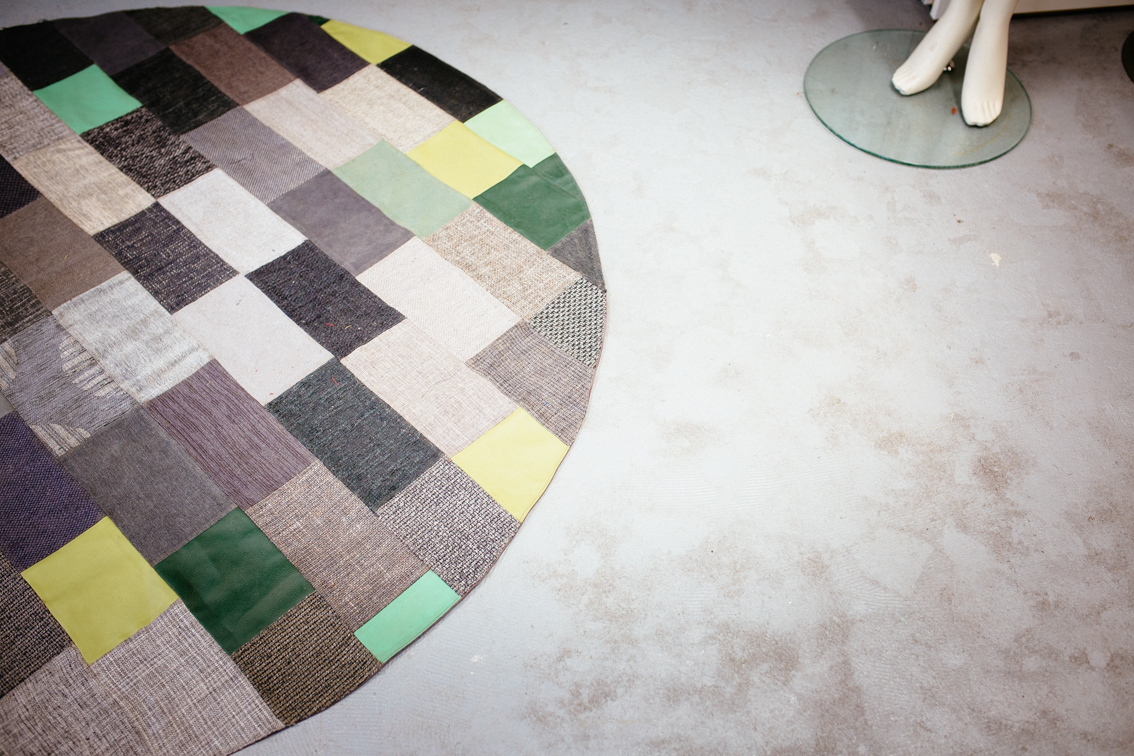
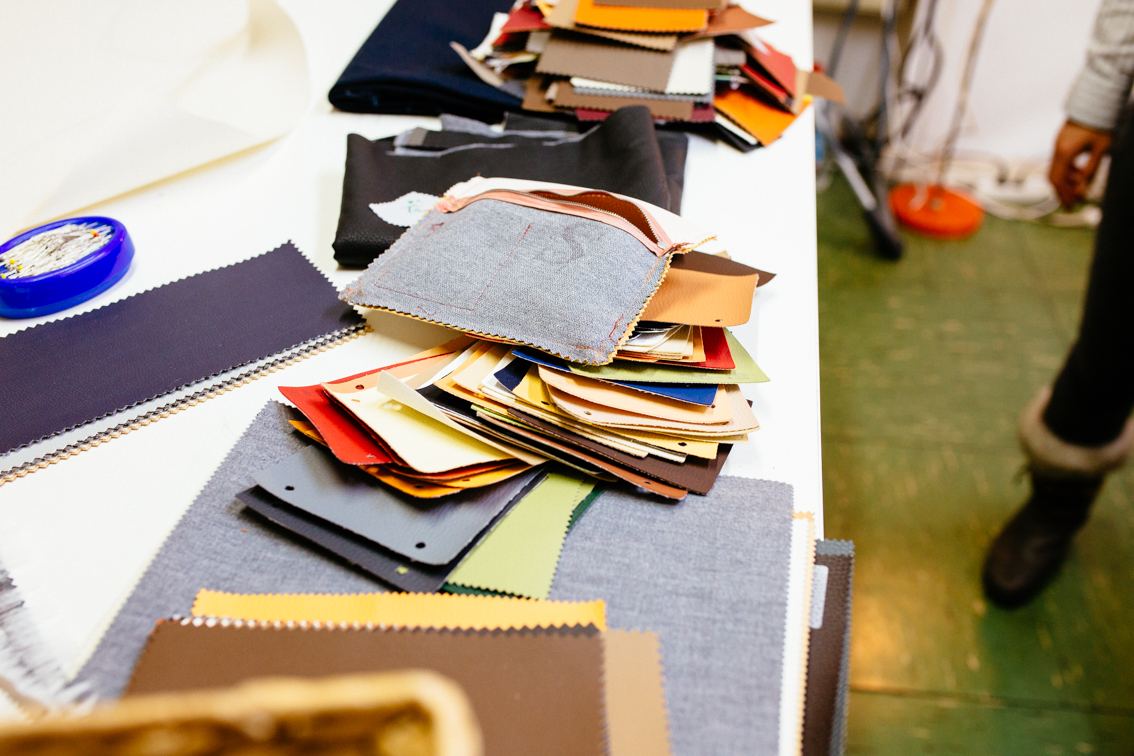
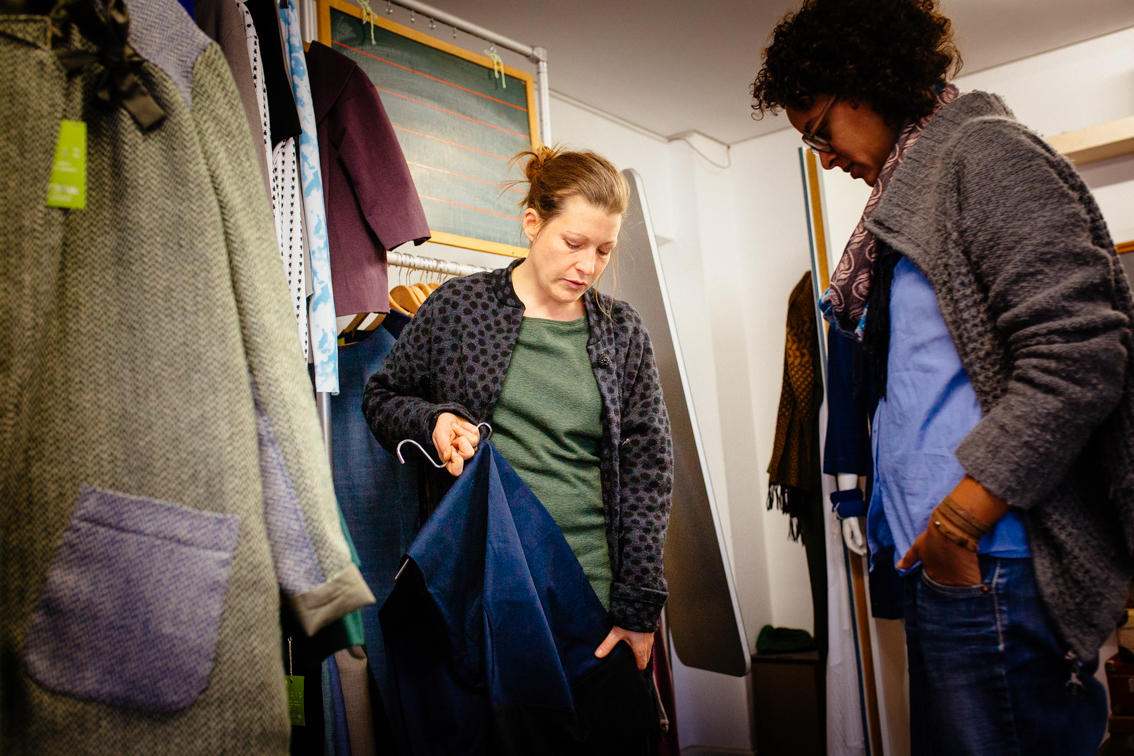
Das heißt dein Absatzmarkt ist auch eher dein Laden und der persönliche Kontakt als der Onlinehandel?
Ja, eher der Endkunde. Der Schritt dahin, nicht mehr zweimal im Jahr auf die INNATEX zu gehen und sich mehr an den Endkunden zu richten, war schon risikoreich und natürlich hatte ich dadurch auch Einbußen. Im Endeffekt bin ich froh, diesen Schritt gemacht zu haben, weil es auch viel Stress heraus nimmt. Nicht mehr zwei Kollektionen im Jahr liefern und den Erwartungshaltungen gerecht werden zu müssen. Allein vorher schon zu wissen, was die Leute nächste Jahr im Winter tragen wollen – das ist doch verrückt! Für mich ist es auch nicht nachhaltig, jedes Jahr zwei neue Kollektionen herauszubringen. Leute, die sich mit diesem Thema auseinander setzten, kaufen eher weniger.
Und die Tatsache, dass du auch individuell anfertigst, hast du dich darauf erst konzentriert als du das Messegeschäft aufgegeben hast?
Nein, das habe ich schon von Anfang an gemacht. Es fing eigentlich damit an, dass ich für gute Freunde Teile genäht habe. Hier mal ein Mantel oder da mal eine Hose. Dadurch, dass ich mich von den Händlern entfernt habe, habe ich natürlich mehr Zeit für die Maßkunden und es kommen dadurch auch mehr.
Außerdem merke ich, dass es etwas ist, was die Leute glücklich macht, wenn sie sich Teile individualisieren lassen können. Das gibt es nicht so oft. Ich erreiche damit natürlich nicht die Masse. Aber das war mir von Anfang an klar und die Leute schätzen es umso mehr. Wenn ich dann kurz vor Weihnachten einen Anruf kriege: „Ach, machen Sie mir doch für meine Frau noch einmal dieses Kleid in rot, das sie ihr schon einmal genäht haben.“ Dann ist das schön.
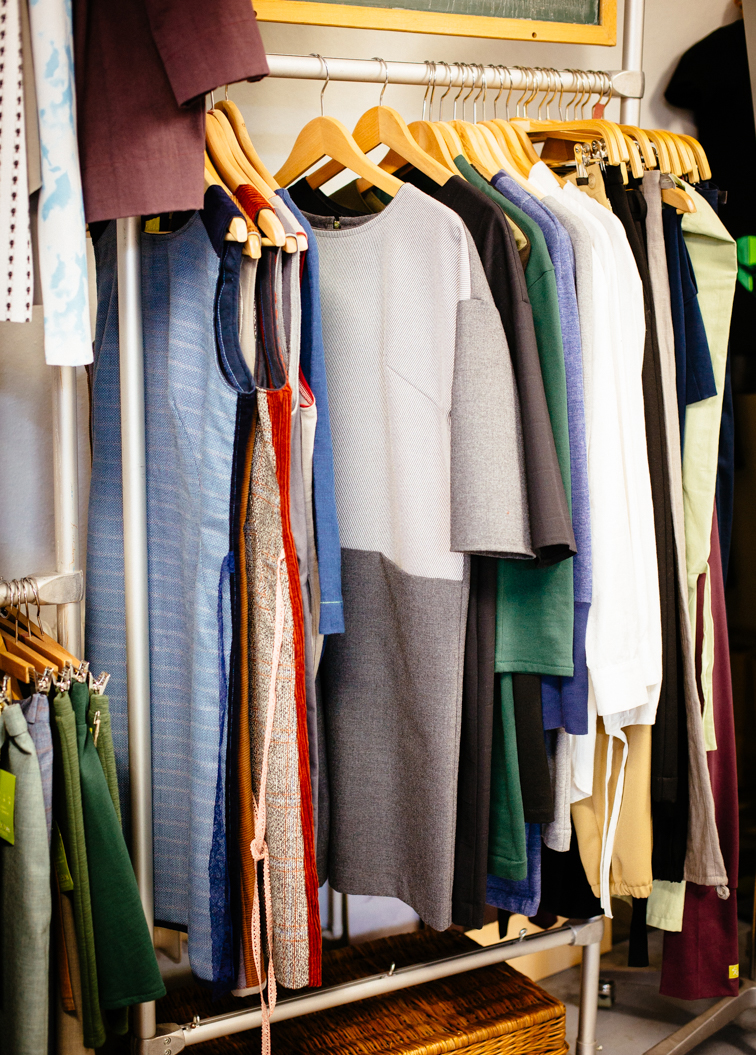
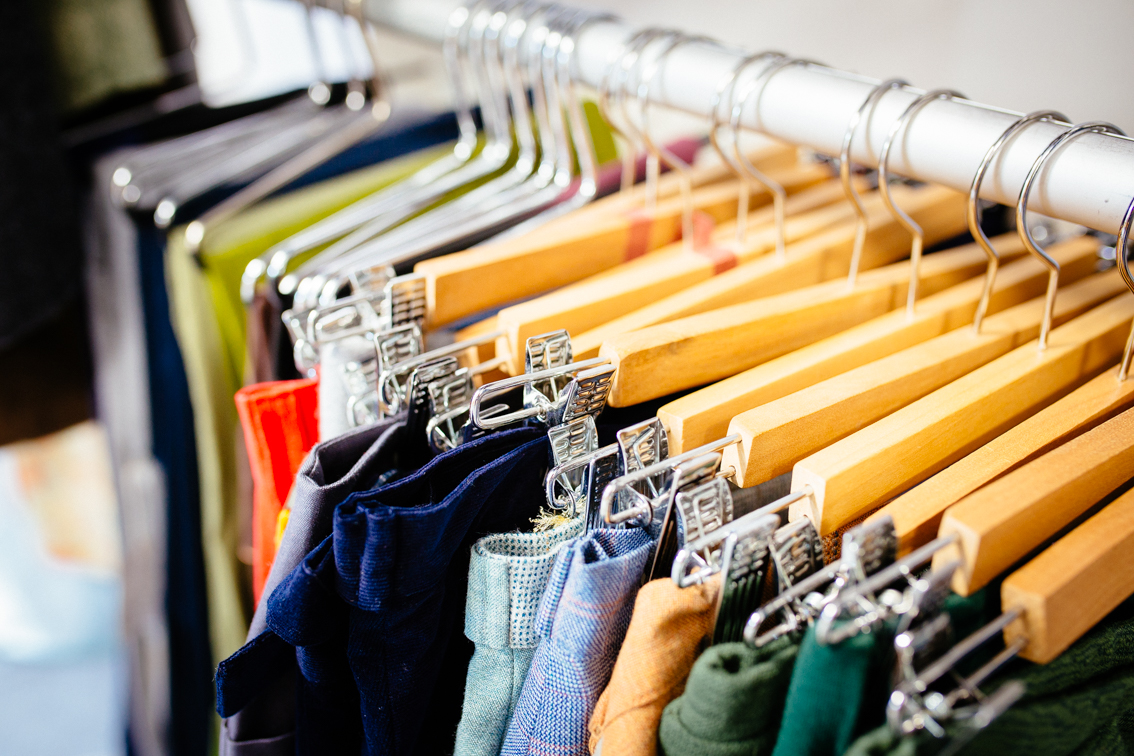
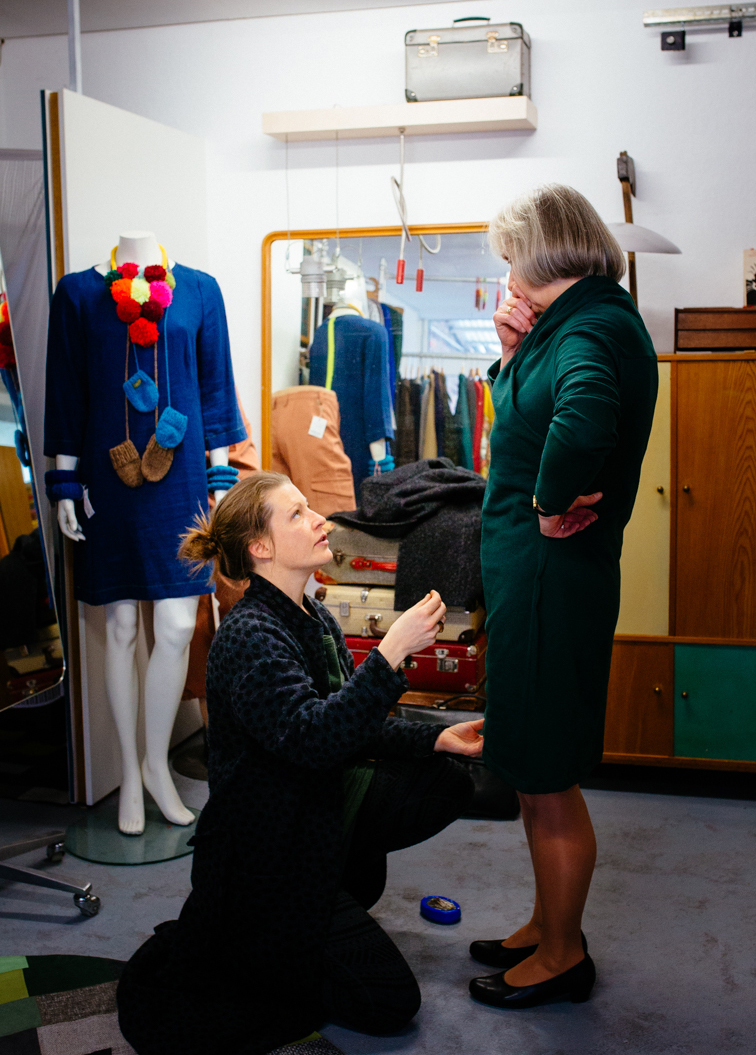
Du meintest eingangs, du hättest am Anfang Schwierigkeiten gehabt Stoffe zu finden, die deinen Ansprüchen genügt haben. Hast du das Gefühl, dass die Branche mittlerweile Druck auf Produzenten ausübt und die Anbieter von Textilien langsam nachziehen?
Nein. Das heißt, auf gewisse Art und Weise schon: Es gibt diese Greenpeace Campagne [„Detox my Fashion“-Kampagne ], die Firmen dazu auffordert offen zu legen, wo welche Teile produziert werden, welche Zwischenhändler beteiligt sind, was für Chemikalien eingesätzt werden. Bei vielen Firmen ist das aber gar nicht mehr nachvollziehbar, weil die so viele Zwischenschritte haben… Da passiert schon was. So habe ich heute nicht mehr ausschließlich Lebenskleidung als Zulieferer, sondern auch noch ein, zwei andere Firmen. Auf der anderen Seite weiß ich, dass ich mich von bestimmten Sachen immer noch verabschieden muss: besonders krasse Farbkombinationen, zum Beispiel, oder Tüll mit Punkten (lacht). Also ein paar Sachen gehen einfach nicht.
Wovon träumst du?
Von einer mobilen KnowMe Werkstatt. Einem Ort für Austausch, für Aufklärung in Sachen Mode und vielleicht auch die DIY Workshops. Hauke schmeißt dann hier den Laden und ich schneidere im Bulli.
Noomi, vielen Dank für das Interview.
Nach der Abkehr vom Messegeschäft und den Kollektionen wird der Fokus bei KnowMe noch einmal enger: Mit der neuen Website, die gerade in Arbeit ist, wird auch der hauseigene Onlineshop verschwinden. Damit wird die aufwändige Pflege des Onlineshops ausgelagert und es bleibt mehr Zeit für das Kerngeschäft und das, was eigentlich Spaß macht – Klamotten entwerfen und schneidern. Statt dessen werden KnowMe Klamotten online nur noch beim Avocadostore zu finden sein. Es wird mehr von den Events geben, die Noomi gelegentlich im Atelier veranstaltet, wie jüngst der weihnachtliche Flohmarkt mit Waffeln und Musterverkauf.
Das Interview mit Noomi Lösing führte Anika Paape, die Fotos machte Frau Babic .


